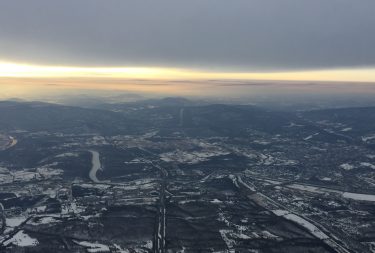
The air in the United States is much cleaner than even a decade ago. But those improvements have come mainly in summer, the season that used to be the poster child for haze-containing particles that cause asthma, lung cancer and other illnesses.
A new study in the Proceedings of the National Academy of Sciences and led by the University of Washington explains why winter air pollution levels have remained high, despite overall lower levels of harmful emissions from power plants and vehicles throughout the year.
Viral Shah, who did the work as part of his UW doctorate in atmospheric sciences, found that air pollution particles follow different pathways during different seasons. Until this study, air quality models preformed well in the summer, but were less reliable in the winter. This work allows scientists and others to understand and improve wintertime air quality in much of the United States and perhaps elsewhere.
Read more at UW Today »
